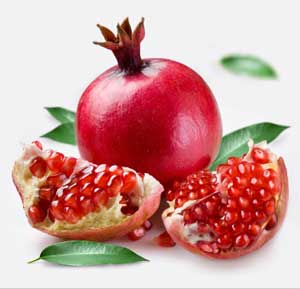
Recipes in this article:
Laab Ped (Duck Salad with Chillies)
Tow-hu Paew Wan (Sweet & Sour Tofu)
Kanom Kluai (Banana-Coconut Cones)
Another London restaurant recommended by Pat Chapman was Blue Elephant, sister restaurant to La Porte des Indes, and owned by the same restaurant group. Pat and Dominique couldn’t join us because they were traveling to—of all places—Thailand to check out the new Blue Elephant in Phuket, but they assured us that our meal would be a great as theirs. And I’m sure it was!
Blue Elephant began in 1980 when Khun Nooror Somany, living in Brussels, convinced her husband, Karl Steppe to back her idea for a fine dining Thai restaurant. It was a huge success and the pair opened restaurants of the same name in London, Paris, and 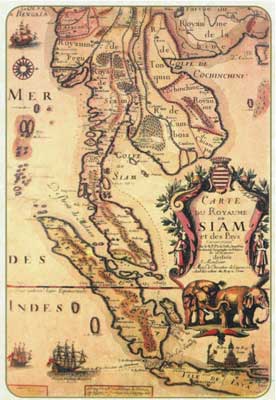 Copenhagen. Now, in addition to the above locations, there are Blue Elephants in Bangkok, Lyon, Dubai, Bahrain, Malta, Beirut, Jakarta, and Phuket. The name originated from blue, the royal color of the Thai flag, and the national animal of Thailand, the elephant. There is also a saying, “if you see a blue elephant, you will never forget it.”
Copenhagen. Now, in addition to the above locations, there are Blue Elephants in Bangkok, Lyon, Dubai, Bahrain, Malta, Beirut, Jakarta, and Phuket. The name originated from blue, the royal color of the Thai flag, and the national animal of Thailand, the elephant. There is also a saying, “if you see a blue elephant, you will never forget it.”
After I dropped the name of Chef Mody of La Porte des Indes, we were seated at the best table in the 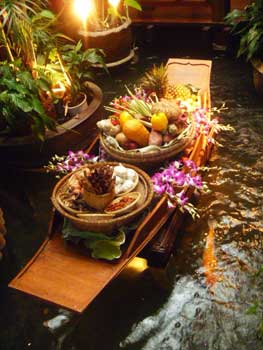 house, next to the pool of giant koi that had a little produce-filled boat floating in it that was evocative of Thailand’s floating market outside Bangkok that we had visited years before. The maitre d’ told me that fresh flowers to decorate the restaurant were flown in weekly from Thailand, and that nearly all of the employees are Thai nationals. He also said that when the restaurant has live music on Sunday, with a musician playing a Thai stringed instrument, that the koi in the pond line up in formation, seemingly attentive to the vibrations of the chords being played.
house, next to the pool of giant koi that had a little produce-filled boat floating in it that was evocative of Thailand’s floating market outside Bangkok that we had visited years before. The maitre d’ told me that fresh flowers to decorate the restaurant were flown in weekly from Thailand, and that nearly all of the employees are Thai nationals. He also said that when the restaurant has live music on Sunday, with a musician playing a Thai stringed instrument, that the koi in the pond line up in formation, seemingly attentive to the vibrations of the chords being played.
After I told the head waiter that we were chileheads, he immediately planned out the meal for us. I had the Chillied Lamb and Mary Jane enjoyed the Grilled Lamb Chops with Fresh Green Peppercorns. I must say that I’ve never eaten so many fresh peppercorns, and it’s a very tasty and spicy experience.
(Chillied Lamb)
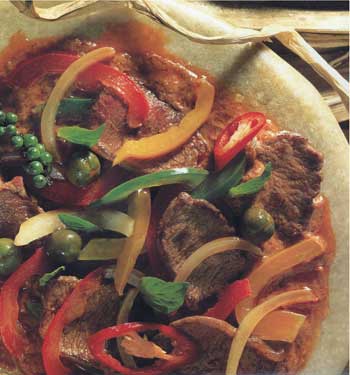
Lamb is not a traditional meat in Thailand, but it is imported from Australia, so it’s available to Thai cooks. In England, Thai restaurants have a ready supply, so lamb meat is common on the menus. Green peppercorns are available packed in brine through Internet sources and Asian markets.
2 medium sweet onions, sliced
4 dried red New Mexican chiles, seeds and stems removed
2 cloves garlic, peeled
2 tablespoons Red Curry Paste, available at Asian markets
1/3 cup vegetable oil
1/2 pound lamb meat, cut into thin slices
1/4 cup sliced and mixed red and yellow bell peppers
1/2 cup peeled and chopped eggplant
3 tablespoons coconut milk
2 sprigs green peppercorns
1 tablespoon fish sauce (nam pla)
6 Thai basil leaves or use small basil leaves
Cilantro leaves for garnish
Combine the onions, chiles, garlic, and curry paste in a blender or food processor and process to a paste.
Heat the oil in a wok until very hot, then stir-fry the paste for 30 seconds. Add the lamb slices and stir-fry for 1 minute. Add the bell peppers and eggplant and stir-fry for 2 minutes.
Add the coconut milk, a little water if needed, the peppercorns, and fish sauce, and mix well.
Serve with coconut or lime rice and garnish with the cilantro.
Yield: 2 servings
Heat Scale: Medium-hot
(Duck Salad with Chillies)
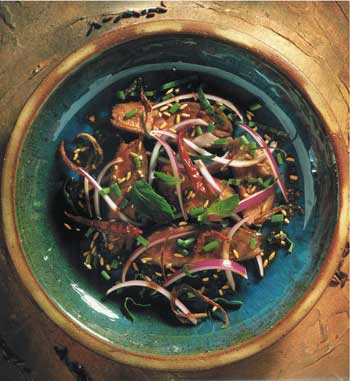
Here is a hot yet refreshing salad for summer dining that was created by the original salad chef at the London Blue Elephant, Chef Tuk. Serve it as a first course for your Thai chilli dinner.
For the Paste:
3 shallots, peeled
5 cloves garlic, peeled
1 2-inch piece of ginger, chopped
1 stem lemon grass
4 dried red Thai or santaka chiles, seeds and stems removed
For the Duck:
1 6-ounce duck breast
1 teaspoon sugar.
2 tablespoons fish sauce
2 tablespoons lemon juice
1 1/2 tablespoons glutinous rice, roasted in a pan and ground
1 teaspoon red chilli powder
1/4 red onion, finely sliced
2 scallions, finely slices
6 mint leaves
1 sprig Thai parsley or substitute Italian
For the Garnish
Fried, sliced shallot pieces
Fried small red chilli
Fresh cilantro leaves
To make the paste, roast the shallots, garlic, ginger, lemon grass and chillies on a baking pan in a very hot oven for 4 minutes, and then process in a blender or food processor.
Grill the duck breast over a hot grill for about 5 minutes until half-cooked, turning it once. Slice it thinly.
Add the paste to a saucepan, then add a little water and the duck slices. Mix together and stir-fry for 5 minutes.
Remove the pan from the heat and stir in the sugar, fish sauce, and the lemon juice. Add the rice and chilli powder, and then fold in the red onion slices, scallions, mint leaves, and parsley.
Serve the duck slices with the garnish ingredients and saffron rice.
Yield: 2 servings
Heat Scale: Medium
(Sweet and Sour Tofu)
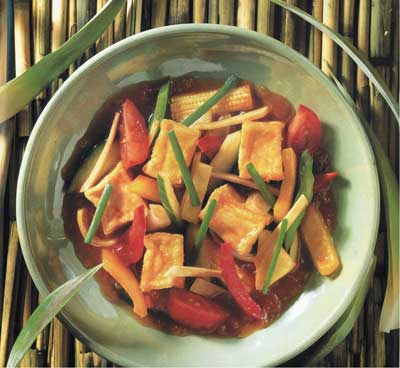
Tofu, not particularly palatable by itself, is transformed in this dish because it absorbs all the Thai flavors inherent in this stir-fry. Of course, rice is a traditional accompaniment, but try rice noodles or crispy noodles instead.
For the Sweet and Sour Sauce:
1/2 medium sweet onion
5 cloves garlic, peeled
1 or 2 serrano chiles, seeds and stems removed
1/2 cup chopped pineapple
1/4 cup sugar
2 tablespoons vinegar
1 teaspoon salt
1/2 cup ketchup
For the Tofu:
3 ounces tofu, cubed
2 tablespoons vegetable oil for frying
1/4 cucumber, sliced thinly
1/4 cup mixed and sliced red, yellow, and green bell peppers
1 medium tomato, quartered
4 button mushrooms, quartered
5 pieces baby corn, quartered
1 scallion, sliced
1 slice sweet onion
1 2-inch piece ginger, sliced julienne
Fresh cilantro leaves for garnish
To make the sauce, puree the onion, garlic, pineapple, and chile in blender. Transfer to a saucepan, add in the remaining ingredients, stir well, and simmer for 5 minutes.
To make the tofu, in a saucepan, heat the oil and fry the tofu for about 4 minutes, stirring well, until golden brown, then drain on paper towels. Transfer the oil to a wok and heat it very hot. Add all the vegetables and ginger and stir-fry for 30 seconds.
Add the sweet and sour sauce and bring the mixture to a boil. Add the tofu, turn off the heat, transfer to a serving plate, and garnish with the cilantro leaves.
Yield: 2 servings
Heat Scale: Mild
(Banana-Coconut Cones)
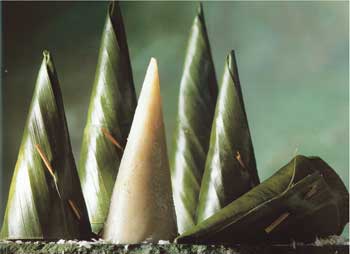
Here is a dramatic and very tasty Thai dessert that’s very easy to prepare. Banana leaves can be found frozen in Asian markets, or you can grow your own bananas and use their leaves. You will need to use a steamer or improvise one from a large pot with a colander inside it.
3 cups very ripe mashed bananas
1 cup coconut milk
1 1/2 ounces rice flour, about 1/8 cup
1/2 cup sugar
1/2 teaspoon salt
1/2 cup grated coconut
2 banana leaves
30 toothpicks
In a bowl, combine the bananas, coconut milk, rice flour, sugar, salt, and 1/2 of the grated coconut and mix well.
Cut 15 6-inch diameter circles from the banana leaves, then cut the circles into equal halves. Form cones with the half circles of banana leaf, fasten them with toothpicks, and then fill them with the prepared mixture. Decorate the tops of the cones with the remaining coconut.
Steam the cones in a vertical position (using a metal rack or colander) in a steamer for 7 minutes, and then transfer to a serving dish. Serve at room temperature.
Yield: 6 servings
Read more about Dave’s culinary adventures in London:





